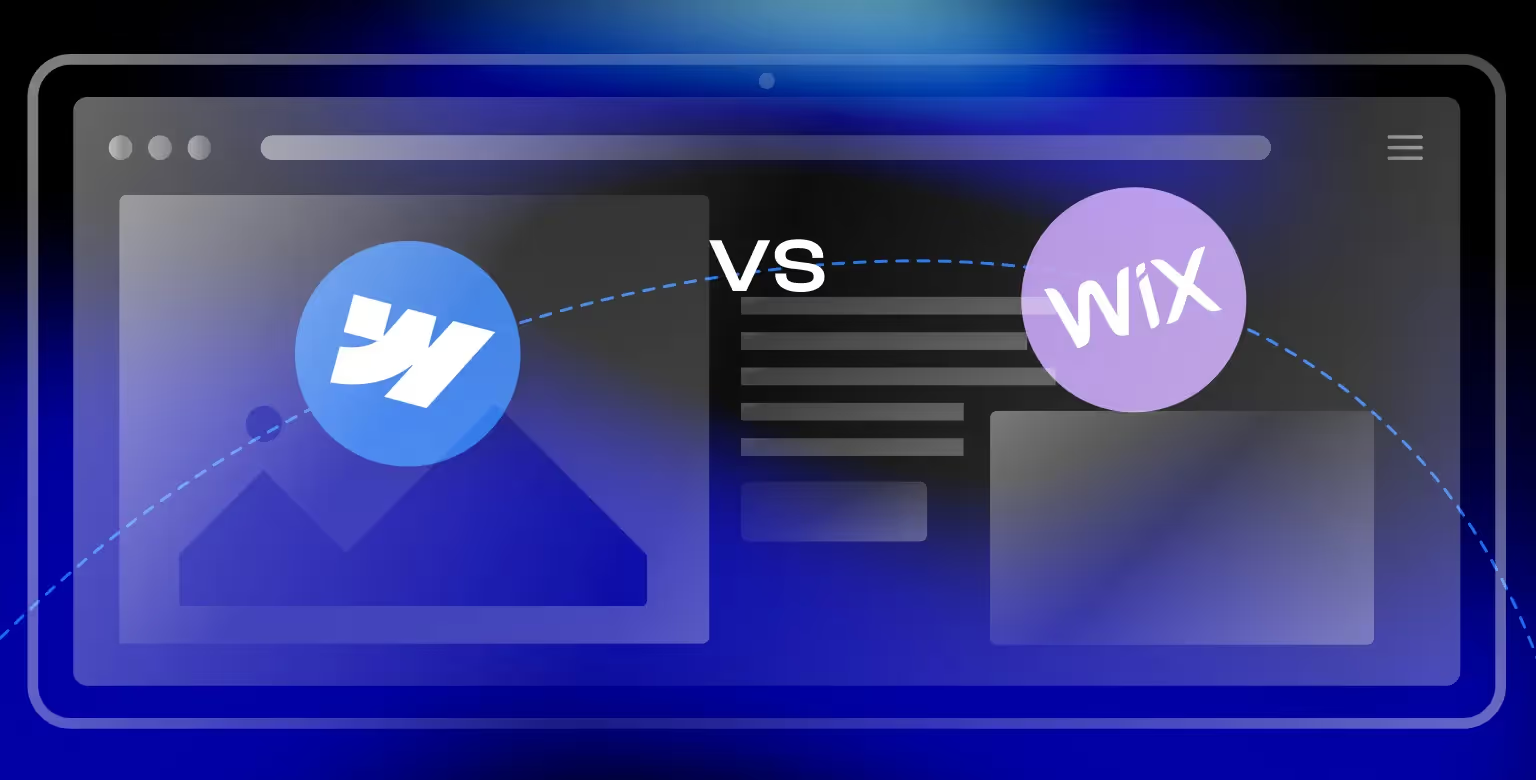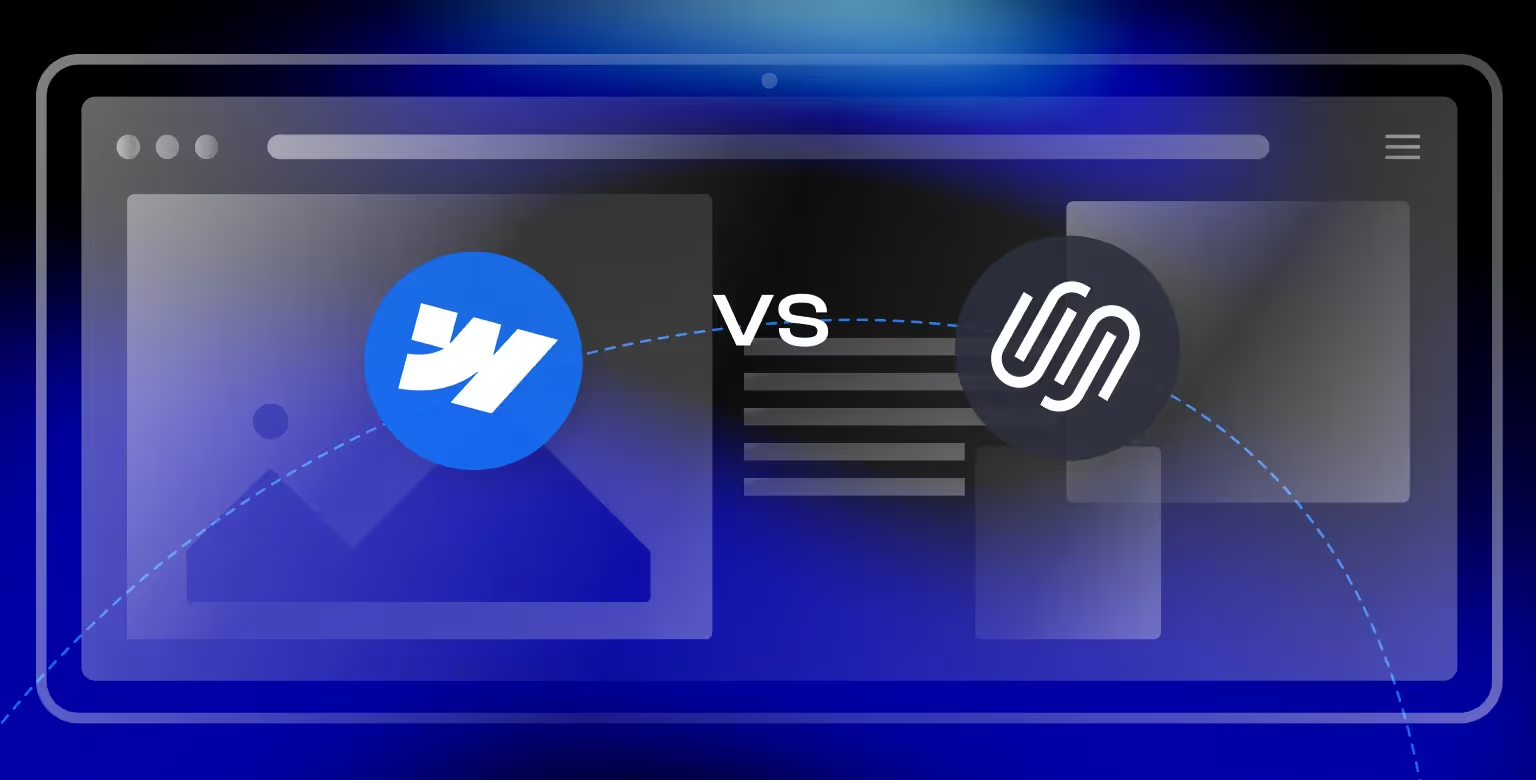Creating a website used to mean hours of coding, extensive knowledge of HTML, CSS, and JavaScript, or relying on developers to bring your vision to life. But what if there was a way to develop a website that was as customizable as it was intuitive, without the need for coding knowledge? Enter Webflow, a platform that has transformed the web development process.
Understanding Webflow: The Visual Web Development Platform
Webflow is a visual website development platform that allows users to create custom, responsive websites without the need for extensive coding skills. The platform provides a drag-and-drop interface, powerful content management system (CMS), and built-in hosting, offering a comprehensive solution for building websites from scratch.
Unlike traditional website builders, Webflow lets you create highly customized websites, complete with animations, interactions, and dynamic content, while still keeping things user-friendly.
Key Features of Webflow
Webflow combines the ease of visual development capabilities with the power of a full-fledged front-end framework. Some of the key features that make Webflow stand out include:
- Visual Development: Webflow’s intuitive drag-and-drop editor allows users to build websites visually, while the platform automatically generates clean, production-ready HTML, CSS, and JavaScript in the background. Whether you're building static websites or dynamic pages, Webflow offers complete flexibility without needing to write code.
- Responsive Design: Building websites with Webflow ensures that your site will be optimized for all devices. You can set your design for desktop, tablet, and mobile, and Webflow automatically adjusts elements to fit various screen sizes. You also have the option to fine-tune the layout on each device view.
- CMS (Content Management System): Webflow's built-in CMS enables you to create dynamic content types—like blogs, portfolios, and e-commerce listings—without relying on third-party CMS platforms. You can create custom content structures, manage content with ease, and design pages that automatically pull data from your CMS collections.
- Hosting and Security: Webflow provides fast, secure hosting powered by Amazon Web Services (AWS) and Fastly CDN. This ensures your website loads quickly, is highly available, and is protected from potential security threats.
- SEO Tools: Webflow's SEO tools allow you to customize meta titles, descriptions, and Open Graph data for social sharing. It also supports custom 301 redirects and structured data (schema markup), ensuring your website is optimized for search engines.

Who is Webflow For?
Webflow is an ideal solution for a wide variety of users, from designers to business owners, and everyone in between. Some of the groups that benefit the most from Webflow include:
- Web Designers: For designers who want complete creative control without relying on developers, Webflow provides the perfect solution. The platform allows designers to create pixel-perfect websites, add animations, and interactions — all within a visual interface.
- Developers: While Webflow offers a visual interface, it also supports advanced customization through custom code (HTML, CSS, JavaScript). Developers can dive deep into a site’s code to implement complex interactions or advanced functionality.
- Entrepreneurs & Business Owners: For entrepreneurs and small businesses, Webflow offers an affordable, scalable solution to launch and manage a professional website. Its ease of use lets non-technical users make updates without relying on a developer. Plus, with powerful integrations, you can turn your website into a business model — whether you’re running an e-commerce store or adding a pay gate to premium content. Imagine monetizing your expertise by offering exclusive access, all while keeping full control over your site’s design and features. You can do all that by integrating your Webflow site with Memberstack. The possibilities are endless!
- Agencies: Agencies can use Webflow to build custom client websites while maintaining full design and development control. The platform’s collaborative tools make it easy for teams to work together, and it offers advanced client permissions to ensure the client can make content updates without altering the design.
How Does Webflow Compare to Other Website Builders?
When comparing Webflow to other website builders like Wix, Squarespace, WordPress, and Shopify, it’s clear that Webflow offers a unique combination of design flexibility, ease of use, and powerful features. Let’s take a closer look at how Webflow compares to these popular alternatives:

Webflow vs Wix
When comparing Webflow to Wix, Wix is known for its beginner-friendly interface, offering a drag-and-drop editor and a wide range of pre-built templates, which makes it easy to quickly create a website without any coding knowledge. It’s a great option for users who need a site up fast and prefer simplicity over design control. However, Wix’s customization options are more limited, as it heavily relies on templates, which can constrain design flexibility and creativity.
On the other hand, Webflow provides complete design freedom. Users have full control over HTML, CSS, and JavaScript, enabling them to create highly customized, responsive websites from scratch. With Webflow, you can fine-tune every element of your website, from layout to animations, and make adjustments that would be difficult to achieve with Wix. Webflow also offers advanced features such as smooth animations, responsive design, and SEO tools, making it ideal for those seeking a professional, high-performance website. If you need more than a template-based website and want complete creative control, Webflow is the better choice.

Webflow vs Squarespace
When comparing Webflow to Squarespace, Squarespace is a great choice for users who prioritize beautiful templates and an easy-to-use platform. It provides a user-friendly interface with pre-designed templates, allowing users to quickly create visually appealing websites without needing any coding experience. However, when you need more design freedom and customization options, Squarespace falls short.
Webflow gives users complete creative control, allowing them to design from scratch with full access to HTML, CSS, and JavaScript. This enables the creation of highly customized, responsive websites, making Webflow a superior choice for users seeking unique designs or more complex functionalities. Additionally, Webflow’s CMS provides greater flexibility in managing and displaying dynamic content compared to Squarespace, which is more limited in terms of customization within both its templates and the template pages within custom builds. Being the most powerful feature of the platform, we have written an introduction to Webflow CMS where you can get a better grasp of the platform's capabilities.

Webflow vs WordPress
When comparing Webflow to WordPress, the two platforms cater to different needs, and understanding their strengths is key. Webflow stands out for its user-friendly, visual design interface. It allows you to create custom, responsive websites without needing much code. With built-in CMS and hosting, Webflow simplifies the entire process — making it perfect for those who want full control over design, yet with minimal complexity. It also comes equipped with powerful SEO tools, like clean code and automatic sitemaps, making it a great choice for those looking for a polished, professional site.
On the flip side, WordPress offers unmatched versatility, thanks to its massive library of themes and plugins. While WordPress requires more tools to customize designs and add advanced features, it’s perfect for users building complex, content-rich websites. If you’re planning something large-scale — like a membership site, an online community, or a huge e-commerce store — WordPress is built to handle it all with ease.
In short, Webflow is the go-to for designers who want total creative freedom and an easy-to-use, all-in-one platform. WordPress, however, shines if you need a highly customizable website with a wide range of specialized features.

Webflow vs Shopify
When comparing Webflow to Shopify, the key distinction lies in their approach to e-commerce. Shopify is a dedicated e-commerce platform, designed to simplify the process of selling products online. It excels at providing extensive e-commerce functionalities, such as product management, inventory tracking, payment processing, and advanced marketing tools, making it the ideal choice for businesses focused on scaling their online stores quickly.
Webflow, on the other hand, offers greater design flexibility, allowing users to create highly customized online stores with complete control over every element of the design. While it does offer e-commerce functionality, it is more suitable for businesses looking for a custom design and unique brand experience. Webflow is perfect for companies that prioritize creative control over standardized e-commerce features, offering the ability to integrate custom functionality, build unique layouts, and fully personalize the shopping experience.
If you need advanced e-commerce features out-of-the-box, Shopify is the better choice. However, for businesses that want a highly customized e-commerce experience and are willing to invest time in learning or integrating additional tools, Webflow provides unmatched design flexibility.
For a broader view across CMS options, visit our Best CMS for SEO comparison.

Key Features Comparison Table
Webflow offers a powerful all-in-one platform that combines complete creative control with advanced features, making it the perfect choice for both non-technical users and developers. Unlike other website builders, Webflow allows you to design without limitations—whether you're crafting custom layouts, adding dynamic content, or fine-tuning your site's responsiveness. From built-in hosting and a robust CMS to SEO tools and advanced animations, Webflow gives you everything you need in one seamless solution. In the table below, you'll see how Webflow stacks up against popular website builders, showcasing its edge in terms of flexibility, customization, and scalability.
Client Example: Transitioning from WordPress to Webflow
Client: The Accountant Quits, an educational platform for crypto accountants, previously using WordPress for their website. The site had become outdated and lacked the flexibility to evolve with their new product launch — Crypto Accounting Academy.
Challenge: The business faced significant issues with their old WordPress site. It was hard to maintain, with frequent plugin conflicts, slow load times, and limited scalability for their expanding product offerings. The website's design and functionality no longer reflected the brand's new direction, and the company was planning a rebrand that included a new corporate identity. The challenge was not only to migrate the website but also to revamp the entire brand and introduce a fresh look to accommodate their new product in the Web3 space.
Solution: After a consultation with Tilipman Digital, the decision was made to migrate the website to Webflow. The transition allowed the business to take full advantage of Webflow’s flexible design options, powerful CMS, and easy-to-use platform. We developed a new visual identity, redesigned the site and integrated advanced functionality such as multi-step forms, filtering options, and animations. We also migrated over 50 podcasts from WordPress to Webflow, creating new assets for each. The rebranding and migration included a technical SEO overhaul to enhance organic search performance.
Results: With the move to Webflow, the business now enjoys full control over their website's design, content, and SEO. They can easily manage their site and make updates quickly, without needing a developer. Since the migration, the brand’s size has doubled, helping to significantly boost its revenue by approximately $100,000. The new website is faster, more responsive, and mobile-friendly, ensuring a seamless experience across all devices. The improved design now perfectly aligns with the brand's focus on Web3 accounting education, while advanced features enhance the user experience. Additionally, the technical SEO improvements have provided a noticeable increase in site visibility, driving more organic traffic and business opportunities.

How Much Does Webflow Cost?
Webflow offers a range of pricing plans to suit different needs and budgets. Here’s a breakdown of the pricing options for the site plans:
- Free Plan: Webflow offers a free plan that allows you to explore the platform and build a website without publishing it to your custom domain.
- Basic Plans: Site plans start at $12/month, which includes a custom domain and hosting. These plans are great for personal sites, blogs, or portfolios.
- CMS Plan: The CMS plan starts at $16/month, providing access to Webflow’s CMS features, which are ideal for dynamic sites like blogs or portfolios that require regularly updated content.
- Business Plan: Starting at $36/month, the Business plan is designed for larger websites with higher traffic needs and additional features such as enhanced SEO tools and higher API limits.
- E-commerce Plan: For businesses looking to sell products online, Webflow’s E-commerce plan starts at $29/month for basic stores and goes up to $212/month for advanced features.
Is Webflow Right for You?
Webflow offers unmatched control over design, performance, and customization, making it ideal for businesses of all sizes. Whether you're a designer, developer, or business owner, it provides the flexibility and tools to create a responsive, SEO-optimized website with ease. If you're looking for full control, ease of use, and the power to build a site that scales with your business, Webflow is the solution. Learn more if Webflow is the best developer tool in our separate article!
Tilipman Digital: Your Trusted Webflow Partner
Looking for a professional website built by experts? Tilipman Digital is your trusted Webflow partner. From designing and developing custom Webflow websites to maintaining and optimizing them, our team provides end-to-end solutions tailored to your business.
Want to see how the Webflow ecosystem is evolving in practice? Here are the Flow Conf 2025 highlights.
We specialize in creating high-performance, scalable websites that are fully optimized for user experience and SEO. Whether you’re rebranding, migrating from another platform, or building a new online presence from the ground up, we ensure your website is crafted to meet your unique business needs.
Ready to take your business to the next level? Contact us today, and let's make your Webflow vision a reality.





